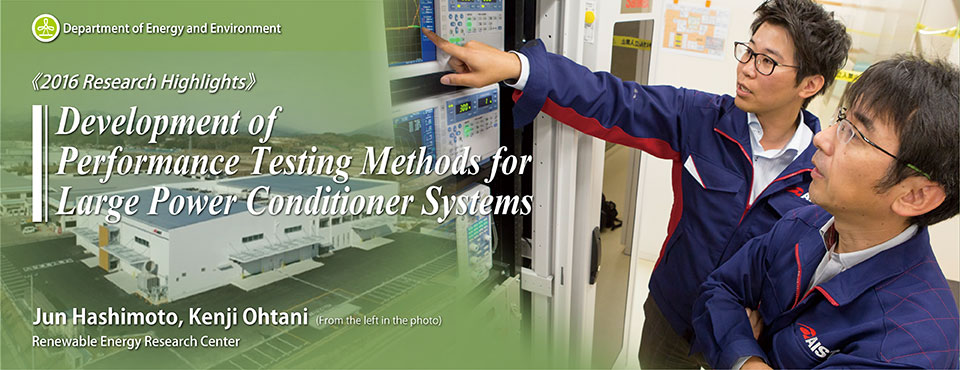
Point
As part of the Project to Develop Global Certification Infrastructure, AIST completed the Smart System Research Facility at its Fukushima Renewable Energy Institute (FREA) and began performance testing of large power conditioner systems (PCSs).
 |
|
 |
|
FREA Smart System Research Facility (exterior) |
|
Experiment for development of EMC testing methods in an electromagnetic wave anechoic chamber |
Outcomes and Methods
Islanding prevention tests were conducted on a large 1500 V DC, 3 MW-class PCS, for the first time globally, in grid inter-connection testing to verify whether a large PCS is compatible with the power quality (frequency, voltage, etc.) of electrical power systems around the world. Environment testing and electromagnetic compatibility (EMC) tests were also conducted on high voltage (6.6 kV) electric devices, such as a next-generation voltage regulator developed by a local company, applying the facility to diverse electric devices and not just large PCSs. With the goal of making large PCSs acceptable worldwide, international standardization activities related to performance testing and other tests were conducted together with the Japan Electrical Safety & Environment Technology Laboratories and other organizations, resulting in five international standards proposed to IEC TC82.
Background
As devices that convert the direct current of distributed energy resources (photovoltaic systems, battery energy storage systems, fuel cell energy storage systems, etc.) and supply AC power at the prescribed frequency and voltage to electrical power systems, PCS is essential devices for making effective use of power from renewable energy. In recent years, PCSs have become larger (500 kW and over) with higher voltages (1500 V DC) to reduce costs and improve performance. By leading the world in responding to such large PCS issues and by working with certification bodies to ensure compliance with certification tests in and outside Japan, the Smart System Research Facility is aiming to assist the smooth adoption of distributed energy resources in countries around the world.
Future Plan
In the first year, a rough idea of the goals has been developed for testing suited to the larger, higher voltage PCS used for photovoltaic systems. Now, AIST is aiming at expanded PCS applications for large battery energy storage systems. Through continual R&D, such as developing “smart/advanced inverters” for next-generation electric power systems including smart grids and micro-grids, and improvement in environment for R&D, AIST will assist the strengthening of industry’s international competitiveness.